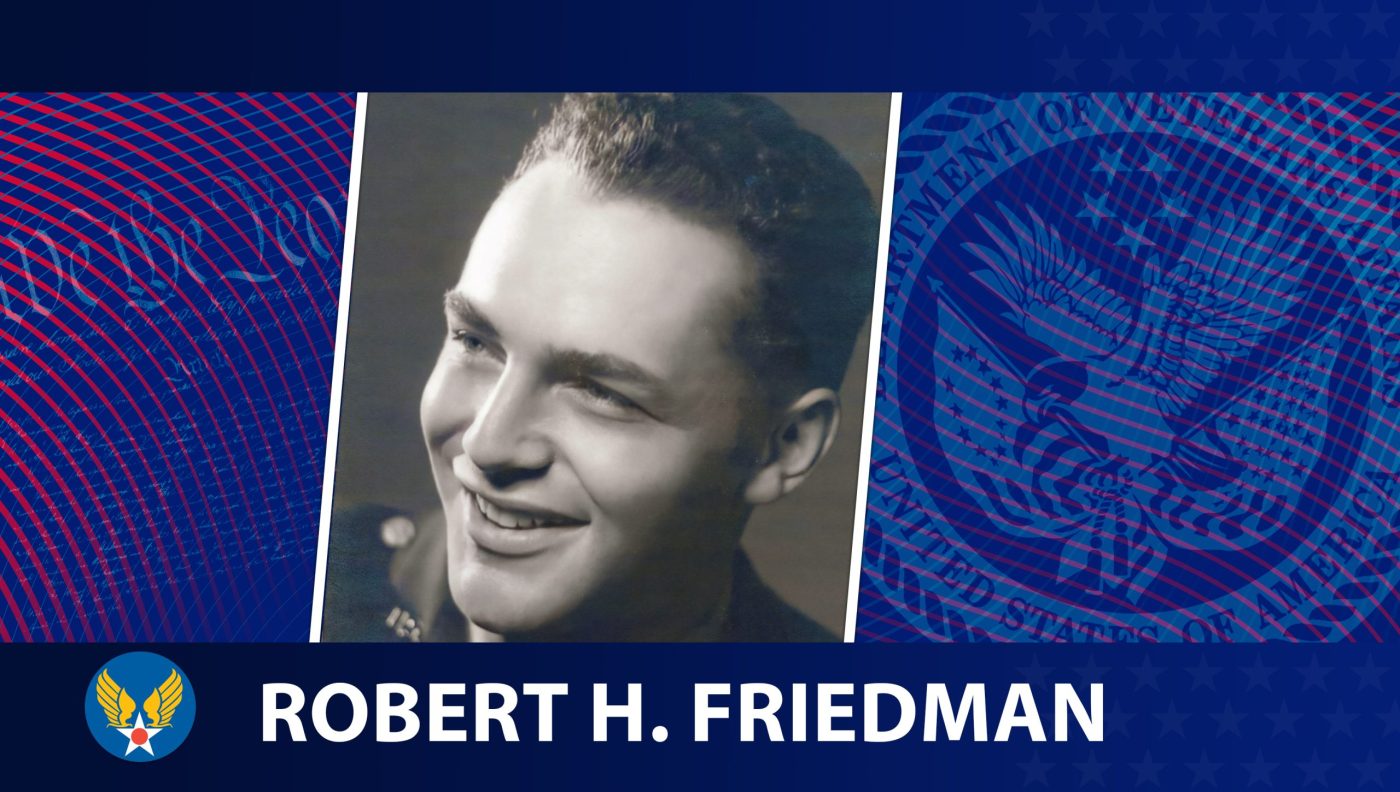Robert Harold Friedman was born in Sioux City, Iowa, in 1924, but grew up in California. Knowing from childhood that he would serve in war, he later enlisted into the Army Air Forces after seeing Air Corps ads and the glamour of the Lindbergh flight. In an interview with the Veterans History Project at the Library of Congress, he said he chose the Air Corp because he’d rather be shot down than die in the trenches.
World War II started a few months after Friedman began college. Not yet 18, he spent several months convincing his mother to let him join the Air Corps, which would soon become the Army Air Forces. He enlisted in August 1942, was called up early the next year, and graduated as an aerial navigator with the rank of second lieutenant in March 1944.
Friedman served one full tour with the “Ragged Irregulars,” the 91st Bomb Group of the Eighth Air Force, during his active service between 1943 and 1945. Beginning in November 1944, he served half of a second tour, which was cut short by the end of the war.
Friedman was awarded the Distinguished Flying Cross Air Medal with six clusters from the 44 combat missions he flew as part of the 91st’s 323rd Squadron. He earned the rank of first lieutenant during the war and resigned from the Air Force Reserve as a captain in 1957.
Following the war, Friedman received a bachelor’s degree from the University of Chicago before earning a doctorate in chemistry from the University of Texas. He worked in research for an oil company, with his name on 51 U.S. patents, before retiring as senior scientist in 1990.
A lifetime member of the 91st Bomb Group Association, Friedman served as 1st vice president starting in 1995 before serving as president from 1998 to 2001. He was dedicated to several other volunteer organizations and societies, such as the American Chemical Society and the Texas Department of Criminal Justice. He was also a member of Jewish Congregation Beth Yeshurun for 65 years, and a smaller, tight-knit religious group, Havurah, for 41 years.
After a long illness, Friedman died in December 2011. He is survived by many family members and friends, including a sister, a wife, four children and eight grandchildren.
We honor his service.
Nominate a Veteran for Honoring Veterans
Do you want to light up the face of a special Veteran? Have you been wondering how to tell your Veteran they are special to you? VA’s Honoring Veterans social media feature is an opportunity to highlight your Veteran and his/her service.
It’s easy to nominate a Veteran. All it takes is an email to newmedia@va.gov with as much information as you can put together, along with some good photos. Visit our blog post about nominating to learn how to create the best submission.
Veterans History Project
This Honoring Veterans profile was created with interviews submitted to the Veterans History Project. The project collects, preserves, and makes accessible the personal accounts of American war Veterans so that future generations may hear directly from Veterans and better understand the realities of war. Find out more at http://www.loc.gov/vets/.
Writer: Michelle A. Shade
Editors: Tayler Rairigh, Kinsey Spratt
Researcher: Raphael Romea
Topics in this story
More Stories
This week’s Honoring Veterans Spotlight honors the service of Army Veteran David Bellavia, who received a Medal of Honor from the Iraq War’s deadliest operation, the Second Battle of Fallujah.
This week’s Honoring Veterans Spotlight honors the service of Army Veteran Scotty Hasting, who served in Afghanistan.
This week’s Honoring Veterans Spotlight honors the service of Army Veteran Roy Sheldon, who served in 97th General Hospital in Frankfurt, Germany.






